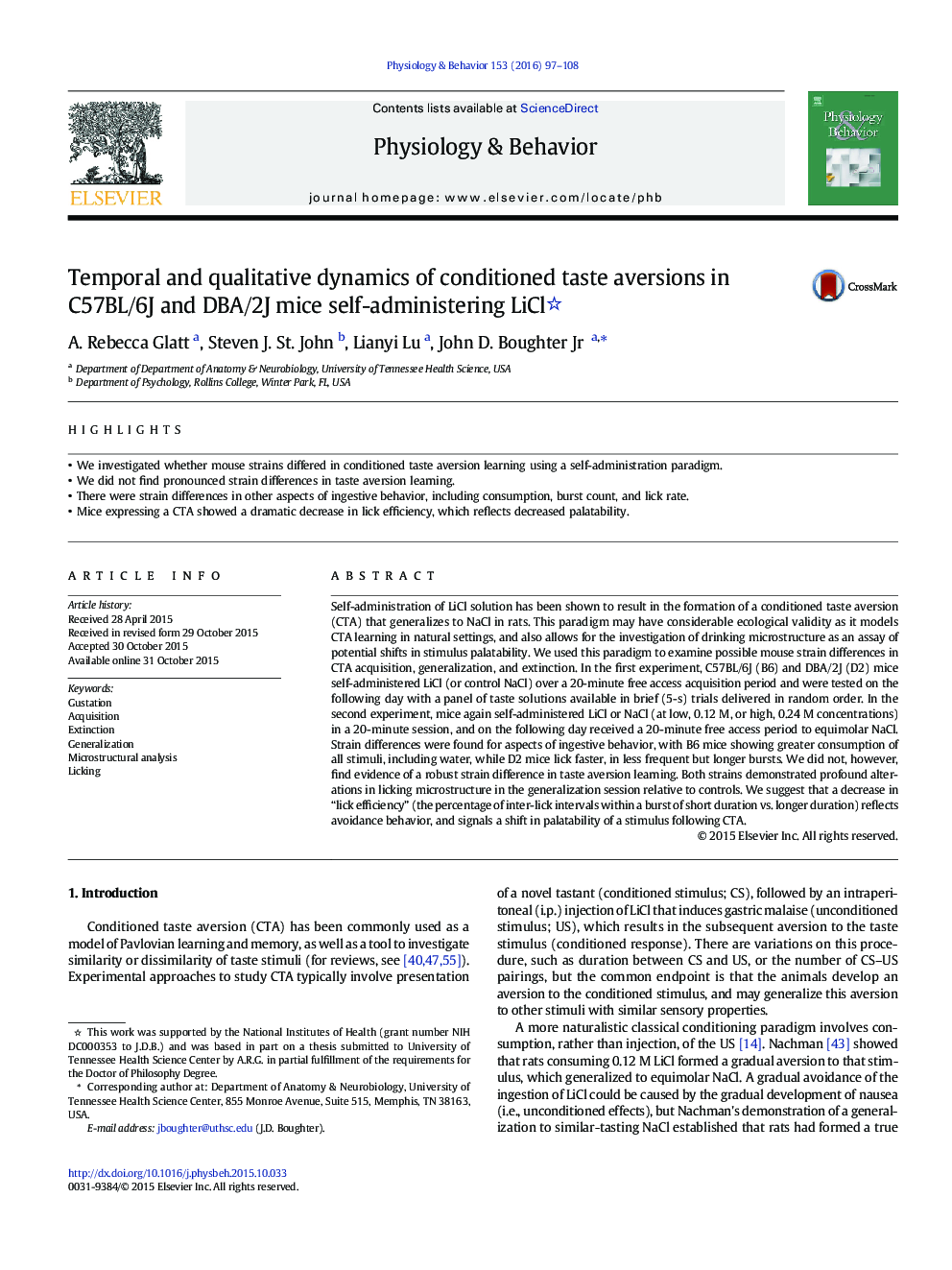| کد مقاله | کد نشریه | سال انتشار | مقاله انگلیسی | نسخه تمام متن |
|---|---|---|---|---|
| 2843951 | 1571165 | 2016 | 12 صفحه PDF | دانلود رایگان |

• We investigated whether mouse strains differed in conditioned taste aversion learning using a self-administration paradigm.
• We did not find pronounced strain differences in taste aversion learning.
• There were strain differences in other aspects of ingestive behavior, including consumption, burst count, and lick rate.
• Mice expressing a CTA showed a dramatic decrease in lick efficiency, which reflects decreased palatability.
Self-administration of LiCl solution has been shown to result in the formation of a conditioned taste aversion (CTA) that generalizes to NaCl in rats. This paradigm may have considerable ecological validity as it models CTA learning in natural settings, and also allows for the investigation of drinking microstructure as an assay of potential shifts in stimulus palatability. We used this paradigm to examine possible mouse strain differences in CTA acquisition, generalization, and extinction. In the first experiment, C57BL/6J (B6) and DBA/2J (D2) mice self-administered LiCl (or control NaCl) over a 20-minute free access acquisition period and were tested on the following day with a panel of taste solutions available in brief (5-s) trials delivered in random order. In the second experiment, mice again self-administered LiCl or NaCl (at low, 0.12 M, or high, 0.24 M concentrations) in a 20-minute session, and on the following day received a 20-minute free access period to equimolar NaCl. Strain differences were found for aspects of ingestive behavior, with B6 mice showing greater consumption of all stimuli, including water, while D2 mice lick faster, in less frequent but longer bursts. We did not, however, find evidence of a robust strain difference in taste aversion learning. Both strains demonstrated profound alterations in licking microstructure in the generalization session relative to controls. We suggest that a decrease in “lick efficiency” (the percentage of inter-lick intervals within a burst of short duration vs. longer duration) reflects avoidance behavior, and signals a shift in palatability of a stimulus following CTA.
Journal: Physiology & Behavior - Volume 153, 1 January 2016, Pages 97–108